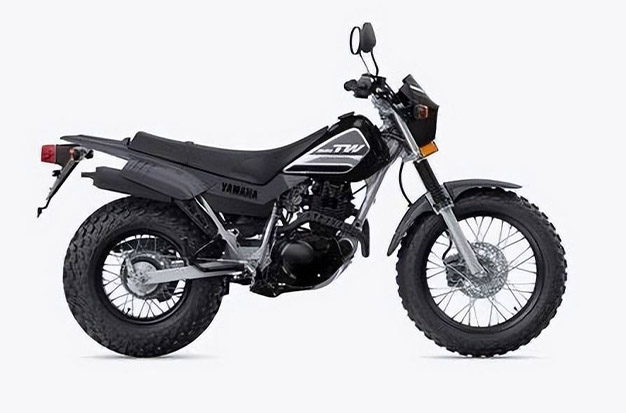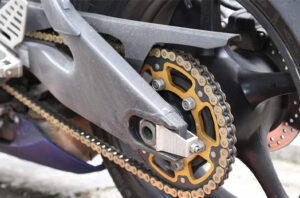How do you check the engine oil level in a motorcycle? Removing the oil gauge from a motorcycle and looking at the wet mark on the gauge will reveal the engine oil level. The oil-wet mark on the gauge should, in ideal circumstances, be situated halfway between the “full” and “low” marks.
Here is a detailed step-by-step guide on how to check the motorcycle’s engine oil level.
What Do The Various Oil Levels Mean?
The engine oil is at the proper level if the wet mark of the oil is between the “full” and “low” marks on the oil gauge.
The engine has a low oil level if the oil-wet mark on the gauge is lower than the “low” mark. The oil needs to be changed or topped off.
On the other hand, it is also concerning if the oil-wet mark exceeds the “full” mark. The bike’s engine is dripping with too much oil. The engine needs to be allowed to breathe. When there is too much oil present, it feels as though you have consumed too much water and are unable to breathe. You should drain some oil.
To summarize, when the oil-wet mark is –
- In the range between “full” and “low”: The level of engine oil is appropriate. There is no need to top up or change the oil for some more time
- Below the “low” mark: Low oil level in the engine. You should change the oil or top it off right away.
- To the left of the “full” mark: The engine has too much oil. It’s necessary to drain some oil.
What Should You Examine In Motorcycle Engine Oil?
Here is a list of things you should look for when analyzing engine oil, whether it is for a motorcycle or a car.
Engine Oil Color
Engine oil’s color indicates how clean or dirty it is. Be prepared to see amber—a hue that is halfway between yellow and orange.
Darker hues suggest that your engine oil needs to be changed because it is contaminated. You should make a rough estimation. It’s still ok if the engine oil is a shade or two darker than amber.
Replace the engine oil as soon as you can if the engine is truly black in color. The following risks are caused by dirty engine oil:
- Reduced gas mileage
- Reduced engine life span
- Engine failure
Engine Oil Texture
Similar to color, an engine oil’s texture also reveals how clean or dirty it is. Clean engine oil should feel smooth to the touch; this indicates that there aren’t any dirt flecks on it yet.
The risks mentioned above may also apply to engine oil that feels very thick and rough and may be contaminated. If the oil is rough and thick, replace it right away.
Engine Oil Level
How much engine oil is still in the pan is indicated by the engine oil level. If the engine oil level is below the required level, you should consider adding more or replacing the engine oil entirely.
You can simply add more engine oil if the oil is still amber in color and smooth to the touch. If not, completely swap it out.
There should be indicators on the dipstick to let you know if the engine oil is below the recommended level. Study the markings carefully.
How Can I Check My Engine’s Oil Level?
Firstly, park your motorcycle on a flat surface. If your motorcycle has a center stand, use it. If not, the paddock stand should also function properly.
You must park on a level surface because checking the oil level will not provide precise and accurate results if the road has rough terrain or is a steep path with a significant slope.
This is the following optional step. You have the option to skip it. But if you also want to make sure the engine oil is of high quality, you must adhere to this rule.
Idle the engine for 10 minutes and then allow it to cool down for 15 minutes. The engine oil will be warmed up in this step and cooled off afterward. Recently worked-up engine oil will yield better results, especially when examining the oil’s quality.
Once more, you can decide to skip this step of idling and cooling down the engine if you are only checking the oil level.
It’s now time to check the motorcycle’s engine oil level.
Taking off the motorcycle’s oil gauge. With the aid of pliers, you can unbolt an overly tightened oil gauge. Clean the gauge after removing it because the oil level it displays at full levels won’t be clear. This is so that the entire gauge won’t become wet as a result of the pressured oil flow inside the motorcycle.
The oil gauge will now have two levels. Full is denoted by the top mark, and low is denoted by the bottom mark.
The ideal oil level is between the top and bottom marks, or between, falling between the full and low oil levels.
As a result of the pressurized oil flow in the system, the oil gauge would have been completely wet. Reinstall the oil gauge after cleaning it, but do not tighten it. Just put the gauge back in place and let the engine oil get on it at the level it is at now.
Remove the oil gauge at this point. Currently, you can check the engine level by looking at the wet mark on the gauge. You should then have access to the motorcycle’s engine oil level.

Symptoms Of Low Engine Oil Level In Motorcycles
You can determine if your motorcycle has low oil by looking at some symptoms rather than checking the oil level directly from the engine oil gauge.
Some contemporary motorcycles come equipped with sensors that show the level of engine oil, making it simpler and more convenient to check the oil directly. The rider must rely on other symptoms to deduce low oil levels because the majority of motorcycles do not have these sensors.
There usually is a large noise or increased vibrations coming from the engine whenever the oil levels are low. When there is not enough oil in the motorcycle, you can even hear metal on metal clinking noises coming from the engine.
Overheated engine and hence, the increased temperatures are another symptom for low engine oil levels.
Another symptom but a drastic one is engine seizure. Inadequate engine oil in the system is most likely to blame for a seizing motorcycle engine.
Effects Of Low Engine Oil Level In Motorcycle
Here are some consequences of your bike’s low engine oil level.
- First, due to lack of sufficient lubrication in the engine, the engine parts see wear and tear. This is due to the slick film that forms between the engine parts thinning out as the oil levels drop. As a result, the wear is brought on by an increase in friction between the contact surfaces.
- Second, because there isn’t a constant flow of oil through the system, the heat generated by friction stays with the engine parts. As a result, the engine parts heat up with no oil there to act as the coolant.
- Third, with no sufficient oil flow to carry the heat and cleanse the surfaces, carbon deposits start to form on the surfaces of the engine parts.
How Far Can A Motorcycle Run On Low Engine Oil?
Not much. An approximate distance of 40 miles to 50 miles can be traveled when a motorcycle has low engine level.
If the motorcycle stops operating as soon as the oil runs out, you’ll be in luck.
On the other hand, if it continues to run for 50 miles, the damaged engine components will give you a headache. These components will wear out prematurely and permanently. Additionally, some of them may cost you money.
How far will the motorcycle travel if the engine oil is low? It depends on the motorcycle and how it is doing, but probably not too far. On average, a low engine oil condition allows for 40 to 50 miles of driving.
However, keep in mind that running on such low oil levels is actually harmful to your bike which will come back to haunt you in the long run.
How Frequently Should My Oil Level Be Checked?
At least once a month, you should check the oil in your motorcycle engine. The ideal situation is if you can conduct a quick inspection every two weeks and before any significant travel.
Since prevention is always preferable to cure, this enables you to identify any potential issues much earlier.
To ensure that all the oil returns to the pan when you check the engine oil, make sure to turn off the engine and let it idle for 5–10 minutes. This improves your reading (as I just mentioned above).
When Should I Have My Oil Changed?
The owner’s manual for your motorcycle will outline how often you should change your motorcycle oil. Early replacements are not really required because modern oils and filters are incredibly stable and robust. As a general rule, you should change conventional oil every 3,000 kilometers, semi-synthetic oil every 5,000 kilometers, and synthetic oil every 7,000 kilometers if you want to be overly cautious or participate in a lot of track days.
Why Should You Check Motorcycle Engine Oil When Warm?
When the engine is warm, which indicates that it has been running for some time, you should check the engine oil because this will allow the engine oil to circulate thoroughly and provide you with a more accurate reading.
Before performing the engine oil check, it’s crucial to let the engine idle for a minute. As a result, the majority of the engine oil can return to the pan and you can accurately gauge the level.
The best course of action is to always follow the directions in your owner’s manual, but if you don’t have one anymore, here are the quick steps to take when checking engine oil:
- Start engine for 5-10 minutes to allow engine oil to circulate
- Turn off engine for 5 minutes to allow engine oil to return to pan
- Pull out oil dipstick and wipe it clean
- Insert dipstick and pull out to analyze
Conclusion
From motorcycle to motorcycle, the inspection process differs. Occasionally, the oil filler cap on a motorcycle will have a dipstick. Make sure the oil is between the minimum and maximum lines by removing the dipstick, just like you would in a car. Examine the oil’s condition while you’re at it. It might be time to change your oil if it appears extremely dark, almost black in color. Other motorcycles have a sight glass at the base of the crankcase that makes it much simpler to check the oil level. Simply check the oil level with your motorcycle standing upright to ensure that it is within specifications and in good condition.



